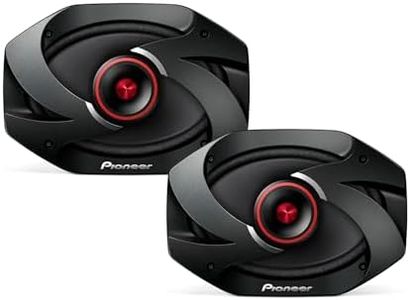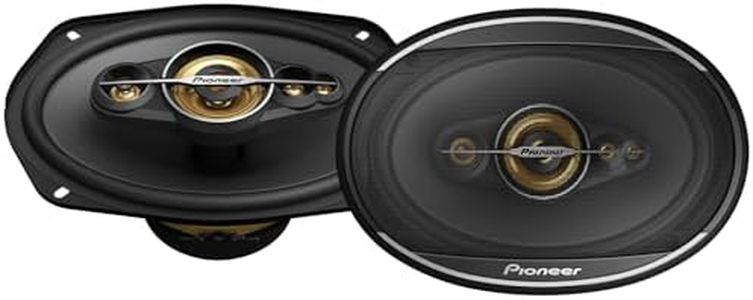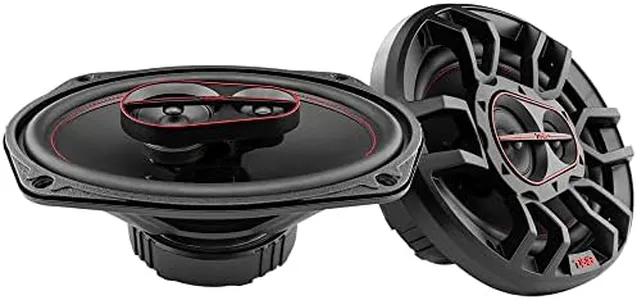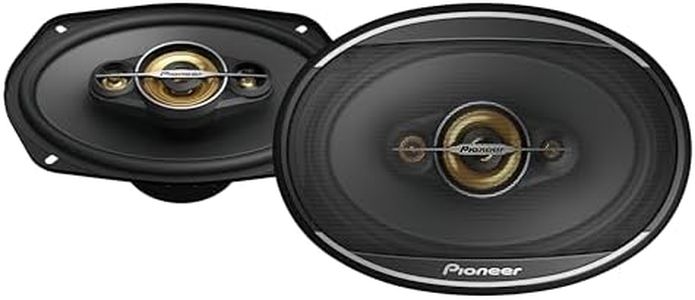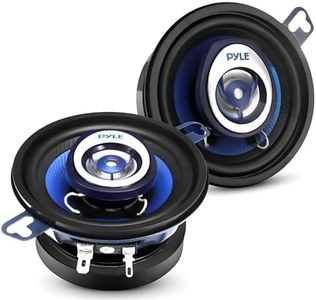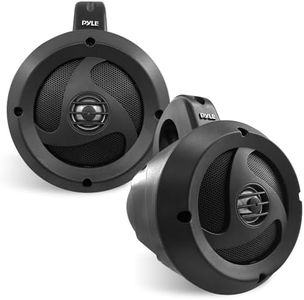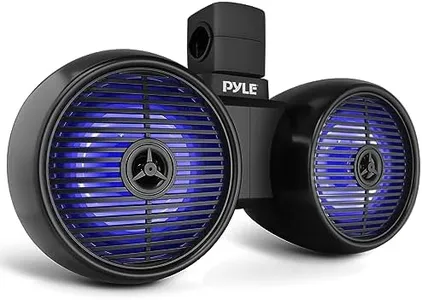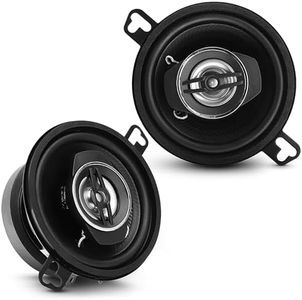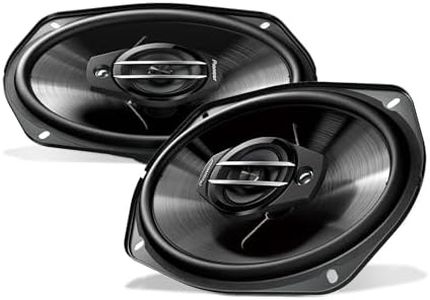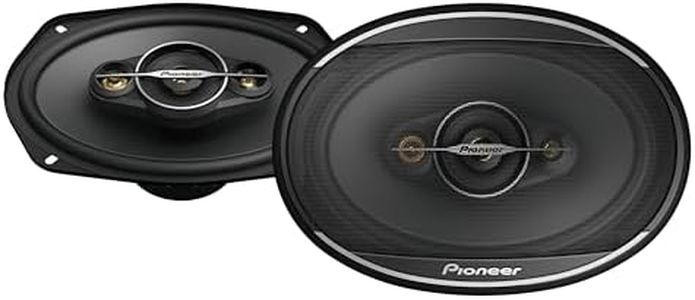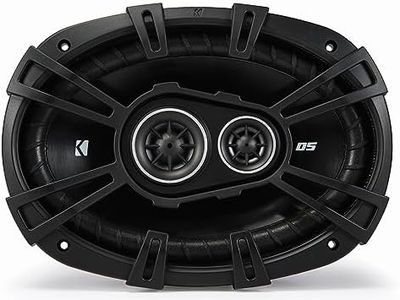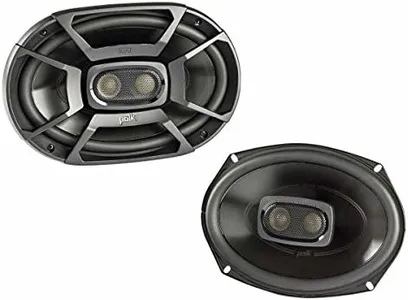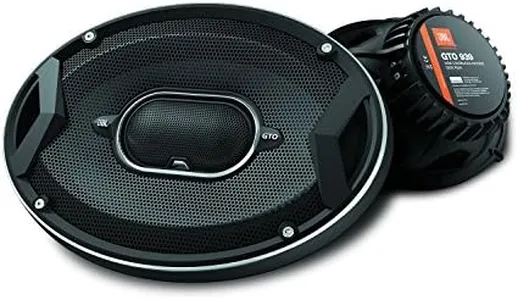10 Best 6x9 Speakers 2025 in the United States
Our technology thoroughly searches through the online shopping world, reviewing hundreds of sites. We then process and analyze this information, updating in real-time to bring you the latest top-rated products. This way, you always get the best and most current options available.

Our Top Picks
Winner
PIONEER P.R.O. Series TS-6900PRO 6” x 9” 2-Way Speakers (Pair) – 600W Max, Perfect for High-SPL Builds and Pro-Level Car Audio
Most important from
2425 reviews
The Pioneer TS-6900PRO 6x9 speakers are a solid choice for enhancing your car's audio system. These speakers feature a 2-way design, which means they have separate drivers for different frequency ranges, resulting in more accurate and balanced sound. With a power handling capacity of up to 600 watts and continuous handling at 100 watts, they deliver dynamic sound, whether you're listening to high notes or deep bass.
The frequency response range of 31 Hz to 16 kHz allows for immersive audio experiences with clear and rich sound quality. Their sensitivity rating of 88 dB ensures they produce clear and powerful sound even at lower power inputs, which means you can enjoy your music loudly without distortion. Additionally, these speakers are part of Pioneer's P.R.O. Series, known for delivering high sound pressure levels and durability over time.
These speakers might not be the best fit for everyone. They have an impedance of 4 ohms, which is standard, but might require an amplifier for optimal performance. They are also not waterproof, so they're unsuitable for vehicles exposed to moisture. Installation should be straightforward due to the flush mount design, but they do weigh 8 pounds, which is something to consider for certain vehicle setups. If you're looking for powerful and clear audio performance with a robust build, the Pioneer TS-6900PRO speakers are a great option, especially if you're aiming for high sound pressure levels in your vehicle.
Most important from
2425 reviews
PIONEER A-Series Plus TS-A6991F 6” x 9” 5-Way Speakers (Pair) – 700W Max, Balanced Sound + Smooth Treble, Enhanced Bass, Great Stock Replacement
Most important from
2425 reviews
The Pioneer A-Series Plus TS-A6991F 6x9 speakers are a solid choice for those looking to upgrade their car audio with clear, balanced sound. Featuring a 5-way design, these speakers have separate drivers for different sound ranges, which helps deliver crisp highs, smooth treble, and enhanced bass. With a continuous power handling of 120 watts and a peak of 700 watts, they can handle louder volumes without distortion. Their sensitivity rating of 92 dB means they efficiently produce loud sound even at lower power, so your music stays clear and dynamic. The frequency response spanning from 29 Hz to 33 kHz covers a wide range of audio, from deep bass to high treble, making music sound full and immersive.
The speakers have a standard 4-ohm impedance, which is common and compatible with most car audio systems. Made with durable materials like polyethylene terephthalate, the build quality supports longevity but these speakers are not waterproof, so they are best used inside the vehicle cabin. Being coaxial speakers, they combine all drivers into one unit, making installation easier compared to component speakers that separate tweeters and woofers but at the cost of slightly less precise sound staging. This makes the TS-A6991F a great stock replacement for anyone wanting a noticeable improvement in sound without complex setup.
Included mounting hardware and speaker wire simplify installation, and the built-in bass boost feature adds extra punch to lower frequencies. If you want a straightforward upgrade with balanced sound, these Pioneer speakers deliver good value for their price, though true audiophiles seeking the absolute best clarity might prefer component speakers instead.
Most important from
2425 reviews
DS18 G6.9Xi GEN-X 6x9 3-Way Coaxial Speakers 180 Watts 4-Ohm with Mylar Dome Tweeters - Grill Included - Full Range Speaker Great for Car Stereo Sound System - Pair
Most important from
358 reviews
The DS18 G6.9Xi GEN-X 6x9 3-Way Coaxial Speakers provide a robust option for enhancing your car's audio system. With a peak power handling of 180 watts and RMS of 60 watts, they are capable of delivering powerful sound that appeals to audio enthusiasts. The impressive power handling, combined with a sensitivity rating that allows for efficient sound production, makes these speakers a strong contender for those looking to amplify their car stereo systems.
The build quality is notable, featuring a durable steel basket designed to endure challenging conditions, whether you're driving on smooth highways or rugged paths. This ensures longevity and reliability. The speakers also come with Mylar dome tweeters that contribute to a clear and wide frequency response, capturing both high and low notes well. With a frequency response that starts from as low as 35Hz, you can expect a rich, immersive sound experience.
Installation is straightforward, especially if you have a 4-ohm factory amplifier, making it accessible for users upgrading from standard OEM speakers. However, the speakers might not be ideal for those seeking waterproof features or needing them for extensive outdoor exposure, as they lack water-resistant properties.
The 3-way coaxial design is a standout feature, promoting a comprehensive sound range without demanding excessive power, which is efficient for most users who want high-quality sound without the need for extensive audio equipment. While these speakers excel in delivering full-range sound, they are best suited for those who primarily use their vehicle for road trips or daily commutes, rather than extreme off-roading or water-heavy environments.
If you're looking to improve the clarity and power of your car audio system, these speakers are a solid choice. Just keep in mind the specific needs of your lifestyle and vehicle conditions when making a decision.
Most important from
358 reviews
Buying Guide for the Best 6x9 Speakers
When it comes to picking the right 6x9 speakers for your car, it's important to consider several key specifications to ensure you get the best sound quality and performance for your needs. These speakers are popular for their ability to deliver a good balance of bass, midrange, and treble, making them a versatile choice for many car audio systems. Understanding the key specs will help you make an informed decision and find the perfect speakers for your vehicle.FAQ
Most Popular Categories Right Now
